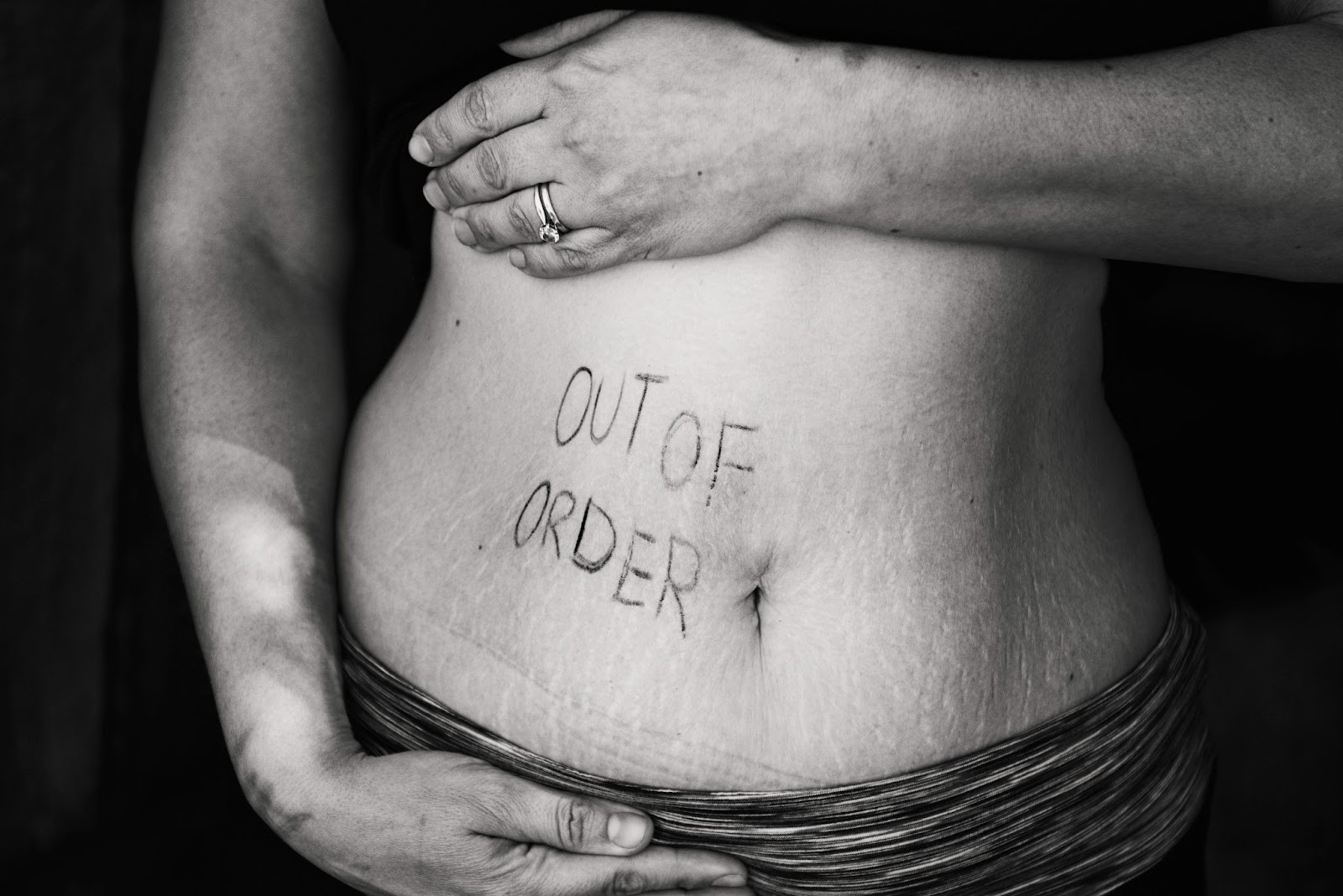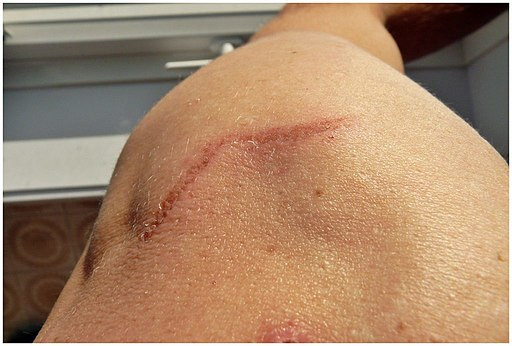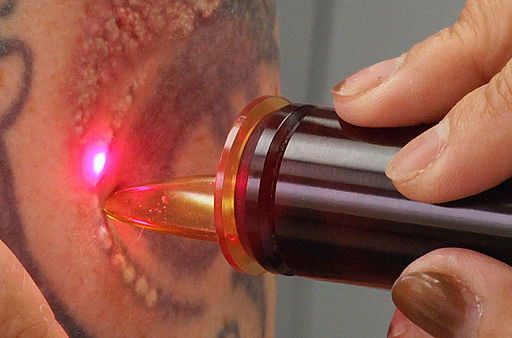Can You Tattoo Over Tummy Tuck Scars? Absolutely, you can get a tattoo over tummy tuck scars to help conceal them. Tattooing offers an artistic and effective way to minimize the appearance of these scars, boosting your confidence. Dive into this comprehensive guide by tattooat.com to discover the best methods, designs, and aftercare tips for tattooing over tummy tuck scars and explore options from skin-toned camouflage to intricate artwork to transform your scars into something beautiful, embracing body positivity and self-expression.
1. Understanding Tummy Tuck Scars
A tummy tuck, or abdominoplasty, is a surgical procedure that flattens the abdomen by removing excess skin and fat and tightening abdominal muscles. While the results can be transformative, a visible scar is an unavoidable outcome. According to a 2023 study from the American Society of Plastic Surgeons, tummy tucks are among the top five cosmetic surgical procedures performed in the U.S., and many individuals seek ways to improve the appearance of the resulting scars. While surgeons take great care to minimize scarring, the location and visibility of the scar can still be a concern. Tattooing provides a creative solution to address this concern.
1.1. Types of Tummy Tuck Scars
Tummy tuck scars vary depending on the surgical technique used. Common types include:
- Standard Tummy Tuck Scar: This is typically a horizontal scar that runs across the lower abdomen, from hip to hip, just above the pubic area.
- Extended Tummy Tuck Scar: Similar to the standard scar but longer, extending further around the hips.
- Mini Tummy Tuck Scar: A shorter scar, suitable for those with less excess skin.
- Fleur-de-Lis Tummy Tuck Scar: This involves both a horizontal and a vertical scar, resembling a fleur-de-lis shape, often used for significant skin removal.
1.2. The Healing Process
Proper healing is crucial before considering a tattoo. Initially, the scar will appear red and raised, gradually fading over time. The typical healing timeline includes:
- Initial Healing (6-8 weeks): The incision closes, and the scar begins to form.
- Maturation Phase (3-6 months): The scar becomes flatter and less red.
- Final Stage (1-2 years): The scar continues to fade, although it will remain visible to some extent.
According to the American Academy of Dermatology, it can take up to two years for a scar to fully mature. It is essential to wait until the scar is completely healed and stable before getting a tattoo to avoid complications such as infection or distortion of the tattoo.
2. Tattooing Over Scars: Is It Possible?
Yes, tattooing over scars is possible, but it requires careful consideration. Scar tissue differs from normal skin in several ways:
- Structure: Scar tissue has a different collagen structure, making it less elastic and more rigid.
- Blood Supply: Reduced blood flow can affect ink absorption and healing.
- Nerve Endings: Altered nerve sensation may result in increased pain or numbness during the tattooing process.
Despite these challenges, skilled tattoo artists can successfully tattoo over scars. The key is to choose an artist with experience in scar tissue tattooing who can assess the scar and recommend appropriate designs and techniques.
2.1. Ideal Candidates for Scar Tattooing
Not all scars are suitable for tattooing. Ideal candidates typically have scars that are:
- Fully Healed: At least one to two years old, with no signs of redness or inflammation.
- Flat and Smooth: Raised or keloid scars may not hold ink well and can be more painful to tattoo.
- Light in Color: Pale or white scars are easier to cover with ink than dark or hyperpigmented scars.
2.2. Contraindications
Certain conditions may make scar tattooing inadvisable:
- Keloid Scars: These raised scars can continue to grow and may react poorly to tattooing.
- Hypertrophic Scars: Similar to keloids but do not extend beyond the original wound boundary. Tattooing may exacerbate the condition.
- Active Infections: Any sign of infection near the scar is a contraindication.
- Certain Medical Conditions: Individuals with conditions such as diabetes, autoimmune disorders, or compromised immune systems should consult with their doctor before considering scar tattooing.
3. Types of Tattoos for Tummy Tuck Scars
When it comes to tattooing over tummy tuck scars, you have several options, each with its own benefits:
- Camouflage Tattoos: These use skin-toned pigments to blend the scar with the surrounding skin, making it less noticeable.
- Decorative Tattoos: These involve artistic designs that cover the scar, drawing attention away from it.
- Medical Tattoos: These are used for areola reconstruction after mastectomy or to mark radiation sites, but are not typically used for tummy tuck scars.
3.1. Camouflage Tattoos
Camouflage tattoos, also known as skin-tone tattoos, aim to match the color of the scar to the surrounding skin. This technique is ideal for those who want to minimize the scar’s appearance without drawing additional attention to the area.
Pros:
- Natural-looking results
- Minimal visual impact
- Effective for reducing the contrast between the scar and skin
Cons:
- Requires precise color matching, which can be challenging
- May fade over time and require touch-ups
- Not suitable for all skin tones or scar types
3.2. Decorative Tattoos
Decorative tattoos use various designs, colors, and patterns to cover the scar. These tattoos can be highly personalized and allow for creative expression.
Pros:
- Wide range of design options
- Opportunity for self-expression and artistic enhancement
- Can completely transform the appearance of the scar
Cons:
- Requires careful design selection to ensure the tattoo complements the body
- May draw more attention to the area than camouflage tattoos
- Some designs may not be suitable for scar tissue
3.3. Popular Tattoo Designs for Tummy Tuck Scars
Choosing the right design is crucial for a successful tattoo over a tummy tuck scar. Here are some popular options:
3.3.1. Floral Designs
Floral tattoos are a popular choice due to their versatility and aesthetic appeal. They can be customized to fit the shape and size of the scar and can incorporate various colors and styles.
- Roses: Symbolize love and beauty
- Lotus Flowers: Represent rebirth and spiritual awakening
- Vines: Can be used to create a flowing design that follows the natural curves of the body
3.3.2. Geometric Patterns
Geometric tattoos offer a modern and symmetrical look. They can be designed to distract from the scar by creating a visually appealing pattern.
- Mandalas: Intricate circular designs that symbolize wholeness and harmony
- Tribal Patterns: Bold and graphic designs that can add a strong visual element
- Abstract Shapes: Allow for creativity and can be tailored to the individual’s preferences
3.3.3. Abstract Art
Abstract tattoos use shapes, colors, and forms to create a unique and artistic design. They can be particularly effective for covering irregular scars.
- Watercolor Tattoos: Soft and dreamy designs that mimic the look of watercolor paintings
- Brush Stroke Tattoos: Bold and expressive designs that resemble brushstrokes
- Minimalist Designs: Simple and understated designs that focus on clean lines and shapes
3.3.4. Nature-Inspired Designs
Nature-inspired tattoos can be a meaningful way to cover a tummy tuck scar, blending organic elements with artistic expression. These designs often incorporate symbols of growth, transformation, and resilience, reflecting the personal journey of overcoming body image challenges after surgery.
- Butterflies: Symbolizing transformation and beauty, butterflies can be designed to elegantly cover the scar, representing a new beginning.
- Leaves and Branches: These elements can create a natural, flowing design that complements the body’s contours, signifying growth and connection to nature.
- Waves: Symbolizing strength and adaptability, wave patterns can be used to create a dynamic and visually appealing tattoo that distracts from the scar.
3.3.5. Empowering Symbols
Empowering symbols can be a powerful way to reclaim your body after a tummy tuck, turning a scar into a statement of strength and self-love.
- Warrior Symbols: Ancient symbols of strength and courage, such as shields, swords, or knots, can represent your personal resilience.
- Quotes: Short, meaningful quotes about strength, beauty, or self-acceptance can serve as a daily reminder of your inner power.
- Abstract Representations: Geometric shapes or patterns that resonate with your personal journey can be used to create a unique and empowering design.
4. Finding the Right Tattoo Artist
Choosing an experienced tattoo artist is crucial for tattooing over tummy tuck scars. Look for an artist who specializes in scar tissue tattooing and has a portfolio showcasing their work.
4.1. Qualifications and Experience
- Specialization: Look for artists who specifically mention scar tissue tattooing in their services.
- Portfolio: Review the artist’s portfolio to see examples of their work on scars.
- Consultation: Schedule a consultation to discuss your goals and assess the artist’s approach.
4.2. Questions to Ask During the Consultation
- Experience: How many scar tissue tattoos have you done?
- Technique: What tattooing techniques do you use for scars?
- Design: Can you help me choose a suitable design for my scar?
- Pain Management: What can I expect in terms of pain, and what pain management options are available?
- Aftercare: What aftercare instructions do you provide?
4.3. Finding a Reputable Studio
A reputable tattoo studio should adhere to strict hygiene standards and provide a safe and comfortable environment.
- Cleanliness: The studio should be clean and well-maintained.
- Sterilization: All equipment should be properly sterilized.
- Licensing: The studio and artist should be licensed and certified.
- Reviews: Check online reviews and testimonials to gauge the studio’s reputation.
5. The Tattooing Process: What to Expect
Understanding the tattooing process can help alleviate anxiety and ensure you are well-prepared.
5.1. Preparation
Before your tattoo appointment:
- Avoid Sunburn: Protect the area from sun exposure.
- Hydrate: Drink plenty of water to keep your skin hydrated.
- Moisturize: Keep the skin moisturized with a fragrance-free lotion.
- Avoid Blood Thinners: Avoid alcohol and blood-thinning medications before the appointment.
5.2. The Tattoo Session
During the session:
- Consultation: The artist will review the design and placement.
- Cleaning: The area will be cleaned and sterilized.
- Stencil: The design will be transferred to your skin using a stencil.
- Tattooing: The artist will use a tattoo machine to implant ink into the skin.
- Bandaging: The tattoo will be bandaged to protect it from infection.
5.3. Pain Management
Tattooing over scar tissue can be more painful than tattooing on normal skin due to altered nerve sensation. Pain management options include:
- Numbing Creams: Topical anesthetics can be applied before the session.
- Breaks: Taking breaks during the session can help manage pain.
- Distraction: Listening to music or engaging in conversation can distract from the pain.
6. Aftercare: Ensuring Proper Healing
Proper aftercare is crucial for preventing infection and ensuring the tattoo heals well.
6.1. Immediate Aftercare (First Few Days)
- Keep it Clean: Gently wash the tattoo with mild soap and water.
- Apply Ointment: Apply a thin layer of fragrance-free, hypoallergenic ointment.
- Keep it Covered: Keep the tattoo covered with a bandage or plastic wrap.
6.2. Long-Term Aftercare (Weeks and Months)
- Moisturize: Apply a fragrance-free lotion regularly to keep the skin hydrated.
- Avoid Sun Exposure: Protect the tattoo from sun exposure with sunscreen or clothing.
- Avoid Soaking: Avoid swimming, baths, and hot tubs until the tattoo is fully healed.
- Don’t Pick or Scratch: Avoid picking or scratching the tattoo to prevent infection and scarring.
6.3. Signs of Infection
Watch for signs of infection, such as:
- Redness
- Swelling
- Pain
- Pus
- Fever
If you notice any of these signs, seek medical attention immediately.
7. Potential Risks and Complications
While tattooing over tummy tuck scars can be a rewarding experience, it is essential to be aware of the potential risks and complications.
7.1. Infection
Infection is a risk with any tattoo, but it is more likely with scar tissue due to reduced blood flow and compromised skin integrity. Proper hygiene and aftercare can minimize this risk.
7.2. Allergic Reactions
Allergic reactions to tattoo ink are rare but can occur. Symptoms include itching, rash, and swelling. Choosing hypoallergenic inks and conducting a patch test can help prevent allergic reactions.
7.3. Scarring
In some cases, tattooing can cause additional scarring, particularly if the tattoo is not done correctly or if the aftercare is not followed properly.
7.4. Ink Fading or Distortion
Scar tissue can affect ink absorption and retention, leading to fading or distortion of the tattoo over time. Touch-ups may be necessary to maintain the tattoo’s appearance.
8. The Psychological Impact of Tattooing Over Scars
Tattooing over tummy tuck scars can have a profound psychological impact, helping individuals reclaim their bodies and boost their self-confidence.
8.1. Body Image
Scars can be a source of anxiety and self-consciousness, affecting body image and self-esteem. Tattooing can transform a negative reminder into a positive expression of self.
8.2. Self-Esteem
By taking control of their bodies and choosing to adorn their scars with art, individuals can experience a boost in self-esteem and a greater sense of empowerment.
8.3. Empowerment
Tattooing can be a form of self-expression and a way to reclaim ownership of one’s body. It can be a powerful statement of resilience and self-acceptance. According to a study by Portland State University’s Art Department in July 2025, personal body art provides confidence and self-love.
9. Real-Life Examples and Success Stories
Hearing from others who have undergone scar tissue tattooing can be inspiring and informative.
9.1. Case Studies
- Sarah’s Story: Sarah had a tummy tuck after losing a significant amount of weight. She chose a floral tattoo to cover her scar, which helped her feel more confident in her own skin.
- Emily’s Experience: Emily opted for a camouflage tattoo to blend her tummy tuck scar with her surrounding skin. She was thrilled with the natural-looking results and the reduced visibility of the scar.
9.2. Before and After Photos
Seeing before and after photos can provide a realistic expectation of the results that can be achieved with scar tissue tattooing.
 tummy tuck scar
tummy tuck scar
 tummy tattoo
tummy tattoo
 tummy tattoo
tummy tattoo
 scar with laser tattoo removal
scar with laser tattoo removal
 unsuccessful laser tattoo removal
unsuccessful laser tattoo removal
 tummy tuck scar tattoo
tummy tuck scar tattoo
 tummy tuck scar cover up tattoo
tummy tuck scar cover up tattoo
9.3. Expert Opinions
Hearing from tattoo artists and plastic surgeons can provide valuable insights and guidance.
- Tattoo Artist: “Scar tissue tattooing requires a delicate approach and a thorough understanding of skin anatomy. It is essential to choose an artist with experience and a keen eye for detail.”
- Plastic Surgeon: “While tattooing can be an effective way to improve the appearance of scars, it is crucial to ensure the scar is fully healed and stable before proceeding. Consult with your surgeon to determine if you are a good candidate.”
10. Frequently Asked Questions (FAQs)
10.1. How long after a tummy tuck can I get a tattoo?
The recommended time frame is at least one to two years after surgery to ensure the scar is fully healed. Getting a tummy tuck tattoo cover-up too soon, the shape may be distorted as the stomach swelling subsides and contracts.
10.2. Does tattooing over a scar hurt more?
Yes, tattooing over scar tissue can be more painful due to altered nerve sensation. However, pain tolerance varies, and numbing creams can help manage discomfort.
10.3. Will the tattoo completely hide the scar?
The extent to which the tattoo hides the scar depends on the type of tattoo, the scar’s characteristics, and the artist’s skill. Camouflage tattoos aim to blend the scar with the surrounding skin, while decorative tattoos distract from the scar.
10.4. Can any tattoo artist do scar tissue tattooing?
No, it is essential to choose an artist with experience in scar tissue tattooing and a portfolio showcasing their work.
10.5. How much does it cost to tattoo over a tummy tuck scar?
The cost varies depending on the size and complexity of the tattoo, the artist’s experience, and the location of the studio. Prices can range from $500 to $2,000 or more.
10.6. What if I don’t like the tattoo?
Tattoo removal is possible but can be costly and time-consuming. Laser tattoo removal, according to Bethany Cirlin, a tattoo removal specialist, takes a minimum of 2 1/2 years to completely remove a tattoo. It’s crucial to carefully consider the design and placement before getting a tattoo.
10.7. How do I find a qualified tattoo artist near me?
Online directories, referrals from friends, and consultations with local studios can help you find a qualified tattoo artist.
10.8. Can I get a tattoo if I have keloid scars?
Tattooing over keloid scars is generally not recommended, as it can exacerbate the condition. Consult with a dermatologist or plastic surgeon for alternative scar treatment options.
10.9. What aftercare products should I use?
Use fragrance-free, hypoallergenic soaps and lotions recommended by your tattoo artist.
10.10. How long will the tattoo last?
Tattoo ink may fade over time, especially in scar tissue. Touch-ups may be necessary every 5-10 years to maintain the tattoo’s appearance.
Transform Your Tummy Tuck Scar Today
Ready to transform your tummy tuck scar into a beautiful work of art? Tattooing over scars is a powerful way to reclaim your body and boost your confidence.
At tattooat.com, we offer a vast gallery of tattoo designs, a curated list of talented artists, and in-depth articles to guide you through every step of the process. Whether you’re looking for a subtle camouflage tattoo or a bold decorative piece, we have the resources you need to make an informed decision.
- Explore Tattoo Designs: Browse our extensive collection of tattoo designs to find inspiration for your scar cover-up.
- Find a Local Artist: Use our directory to locate experienced tattoo artists specializing in scar tissue tattooing near you.
- Read Expert Articles: Learn about the tattooing process, aftercare tips, and potential risks in our comprehensive guides.
Don’t let your tummy tuck scar hold you back any longer. Visit tattooat.com today and start your journey to a more confident and empowered you. Contact us at 1825 SW Broadway, Portland, OR 97201, United States, or call +1 (503) 725-3000 for a consultation. Let us help you turn your scar into a masterpiece!

